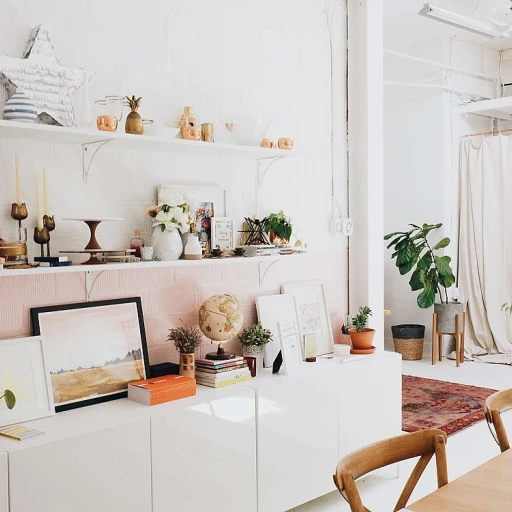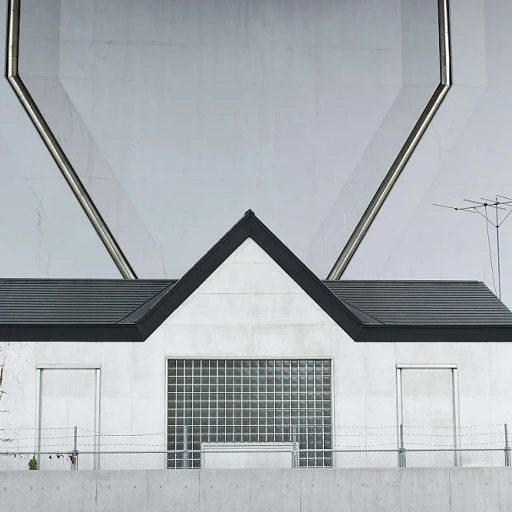
The Importance of Material Longevity
The Key Role of Lasting Materials in Design
Material longevity is a cornerstone of sustainable design, intertwining both environmental responsibility and the quest for durable products. The emphasis on longevity not only reduces waste but also enhances the lifespan of the design product. This matters because extending a material's life means fewer resources are consumed over time, lessening the ecological footprint of production and disposal. Designers are increasingly adopting a long-term perspective, considering how materials age and wear. Quality and resilience become crucial factors alongside aesthetics and functionality. A useful resource on this topic can be found in a revelatory blog about design insights, which offers a deeper understanding of decision-making in materials selection. Recognizing the pivotal role of durable materials leads to informed selections, influencing the overall sustainability of projects. As we explore further, the choices we make in materials reflect both immediate design goals and long-term environmental impacts. This ongoing balance between durability and design elegance echoes throughout our discourse on sustainable material usage.Factors Affecting Material Durability
Exploring the Core Challenges
Understanding the factors affecting material durability is essential to unlocking advanced design strategies. Certain factors play pivotal roles in determining how long a material will withstand the test of time and usage. It is crucial for designers to consider these factors early in the design process, ensuring that the end product not only serves its purpose but also minimizes environmental impact.- Environmental Conditions: Exposure to elements such as sunlight, moisture, temperature fluctuations, and chemical agents can significantly impact material longevity. By assessing and selecting materials that can withstand specific environmental conditions, designers can enhance the durability of their creations.
- Usage Patterns: The way an item is used greatly affects its lifespan. Materials subject to frequent handling or substantial weight need different durability considerations than those used in low-impact settings. Incorporating usage analysis in the design phase helps in anticipating these stress points.
- Material Composition: The inherent properties of a material, such as flexibility, brittleness, and texture, influence how it interacts with other materials and its overall capacity to endure wear and tear. Designers need to deepen their understanding of these intrinsic qualities for better material choices.
- Technological Advancements: With ongoing research and innovations, new materials and treatments are emerging that can extend the lifespan of traditional materials. Keeping abreast of these technological advances provides designers with an arsenal of options to improve product durability.
Sustainable Design and Material Choices
Making Informed Choices for Environmental Impact
In the realm of sustainable design, selecting the right materials is crucial for minimizing environmental footprints. The prevailing trend is towards materials that offer both longevity and reduced carbon emissions. However, choosing such materials requires a careful consideration of several factors that influence their durability, as previously discussed.
Designers are increasingly embracing natural, renewable, and recycled materials that not only last longer but also consume fewer resources during production. Materials like bamboo and cork are gaining popularity due to their rapid renewability and minimal impact on ecosystems. As these options become more mainstream, they contribute to forming a foundation for sustainable design choices.
An important aspect of material selection is understanding the lifecycle of design products. Exploring alternatives to traditional design methods includes assessing a material's environmental costs from production to disposal. The quest is to reduce waste, promote recycling, and ensure that the lifespan of each material is fully maximized.
Furthermore, the commitment to sustainability extends beyond just the materials used. It involves a holistic approach that includes sustainable sourcing, energy-efficient production processes, and fair labor practices. These considerations align with a broader view of environmental responsibility, encouraging designers to think globally while acting locally.
Through these informed material choices, designers can significantly contribute to a reduction in the environmental impact of their projects, thus aligning with the long-term goals of sustainability and durability.
Innovative Materials Enhancing Durability
Exploring Innovative Materials for Enhanced Durability
In the quest for sustainable design, the construction sector is increasingly turning to innovative materials that promise to enhance the durability of structures. These materials not only extend the lifespan of products but also reduce the environmental impact, aligning with the principles of sustainable design.
One of the most promising developments is in the field of cementitious materials. These materials, which include reinforced concrete, are being engineered to improve their mechanical properties and long-term durability. Advances in materials science have led to the creation of concrete mixes that are more resistant to environmental stressors, thus prolonging the life of construction projects.
Another area of innovation is in the use of steel and other metals. By enhancing the properties of steel, such as its resistance to corrosion, designers can ensure that structures maintain their integrity over time. This is particularly important in environments where exposure to moisture and chemicals is a concern.
Moreover, the development of new composite materials is offering exciting possibilities. These materials combine different elements to create products that are not only durable but also lightweight and versatile. This can significantly reduce the resources needed for construction and maintenance, thus contributing to the overall sustainability of a project.
While the focus on durability is crucial, it is equally important to consider the aesthetic aspects of design. Balancing these two elements requires a thoughtful approach to material selection, ensuring that the final product is both functional and visually appealing.
In conclusion, the integration of innovative materials in design is a key strategy for enhancing durability. By leveraging advancements in materials science, designers can create structures that stand the test of time, ultimately contributing to a more sustainable future.
Balancing Aesthetics and Durability
Integrating Aesthetic Appeal with Longevity
Balancing aesthetics and durability can seem like a daunting task in design. There's often a perceived trade-off, where maximizing one element leads to a compromise in the other. However, innovative advancements in sustainable materials are making it increasingly feasible to achieve both. Designers are focusing on harmonizing the visual aspects of materials without sacrificing their robustness. This integration is essential in ensuring that sustainable designs remain appealing and functional over time. It's not just about choosing the right materials but also about implementing them in a way that maintains the integrity of a product's look and lifespan.- Surface Treatments: Modern surface treatments and coatings can enhance the visual appeal of a material while also providing additional protection against wear and tear. These treatments can include UV protectants or scratch-resistant finishes that extend the material's life.
- Material Technology: Advanced composites and nanotechnology are playing a pivotal role here. Using these technologies, designers are creating materials that are not only durable but also capable of maintaining their aesthetic quality over time.
- Smart Design Choices: Employing design principles that reflect both timeless aesthetics and enduring strength without resorting to excessive bulkiness or compromises. For instance, using natural motifs or textures that naturally age well can help a design maintain its attraction over years.
Case Studies in Durable Design
Real-World Examples Showcasing Durable Design
Exploring how durability plays out in real-world design is crucial to understanding the practical application of sustainable materials. The link between material longevity and effective design can be seen across various industries and projects. Here are a few noteworthy examples that highlight the successful integration of durable materials.- Public Infrastructure Projects: Major infrastructure undertakings often serve as proving grounds for durable materials. Take, for example, the extensive use of recycled composites in bridge construction. These materials not only withstand environmental stress but also align with sustainability goals by reducing reliance on virgin resources.
- Furniture Design: Designers are increasingly turning to innovative materials such as advanced polymers and upcycled metals, which enhance both durability and sustainability. This approach ensures that the end products remain resilient to wear and tear while minimizing environmental impact.
- Architectural Innovations: The evolution of sustainable architecture often revolves around material breakthroughs. Utilizing high-performance concrete and reinforced timber allows structures to resist the elements and decrease maintenance needs over time.
- Consumer Electronics: The tech industry is progressively adopting more sustainable materials. By integrating elements like biodegradable plastics or robust metals, electronics not only extend their functional lifespan but also address the growing concern of electronic waste.














